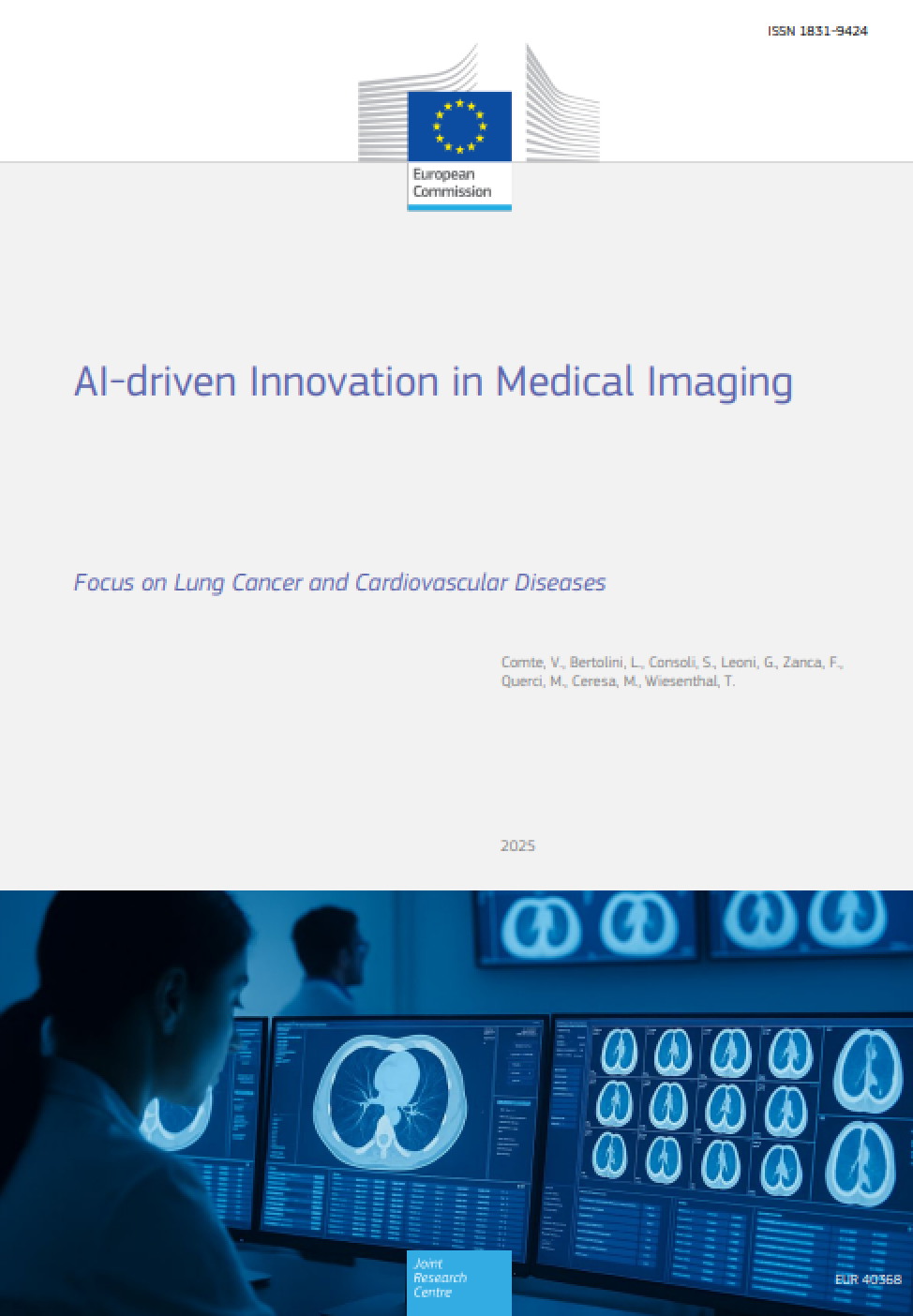Details
- Publication date
- 2 July 2025
- Author
- Joint Research Centre
- Topic area
- Evolution of AI technology
- Health
- Trustworthy AI
Description
Artificial Intelligence and Deep Learning are increasingly being used to support the prevention, diagnosis, and follow-up of non-communicable diseases, helping to ease the burden on under-resourced healthcare systems.
This report reviews the most widely used AI methods in medical imaging, including annotation, detection, and classification, and evaluates their level of technological maturity and readiness for clinical uptake. Through two concrete use cases: lung cancer imaging (covering nodule segmentation, malignancy detection and classification) and cardiovascular disease classification using a biomechanics-informed model, we highlight how AI can be effectively integrated into healthcare workflows. We also examine the full data pipeline, including anonymization, preprocessing, analysis, and evaluation, to better understand practical implementation challenges.
Our findings show that while AI holds great promise, the path to deployment requires careful attention to data quality, interpretability, and clinical validation. Based on our hands-on experience, we provide actionable recommendations to guide EU-funded projects toward safe, efficient, and trustworthy adoption of AI in healthcare.

